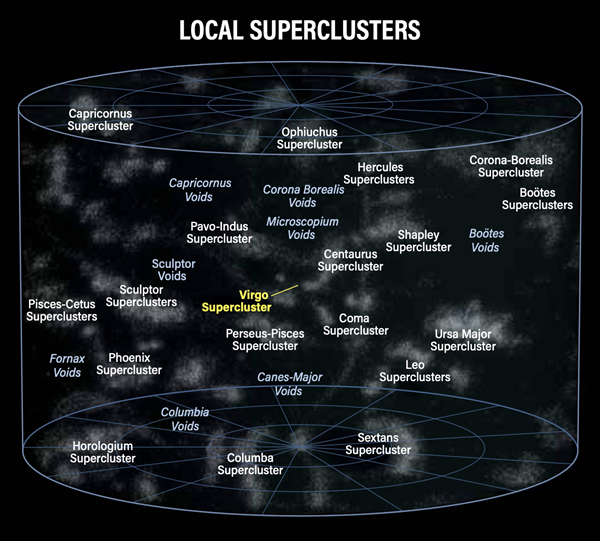I’ve seen it stated that giant voids exist between groups of galaxies. Is dark energy, the mysterious force driving galaxies away from one another, creating these vast voids of space?
To understand the forces at play in the expansion of the universe, it helps to rewind all the way back to the Big Bang, when the universe burst forth from an extremely hot and dense point. The cosmos then underwent inflation, when it quickly but briefly ballooned outward. Matter and energy (there were no galaxies or stars yet) were pushed in all directions, causing the universe to grow at a rate faster than the speed of light. Eventually, this inflationary period ended, but the universe didn’t stop growing.
Imagining this expansion can be a bit tricky. There are a few common explanations that people use, and my favorite is raisin bread. Imagine the cosmos as raisin bread dough baking in the oven. As the dough rises, the raisins move farther apart — but they themselves aren’t moving. Instead, the expanding dough is carrying them apart. The same is true for the universe: As it expands, galaxies are pulled away from each other, but they aren’t moving — space itself is. And up until 1998, we thought leftover energy from the Big Bang was the only thing driving this expansion and gravity would eventually slow it down. Instead, the opposite is happening, thanks to dark energy.
As for the voids in between galaxies, you can think of the universe as a vast web. The silk strands are filled with large clusters of galaxies, called superclusters, and the spaces in between the webbing are voids with very few or no galaxies. Researchers believe the seeds for these voids and clusters were planted at the very beginning of the universe, when it was much smaller and therefore most sensitive to any fluctuations in density. So while dark energy did not create these voids, it had a great influence on how they evolved and grew over time. That means voids are a powerful way to study dark energy, as they magnify cosmological differences felt in the early universe. By studying their evolution, scientists hope to gain insight into the nature of dark energy.










